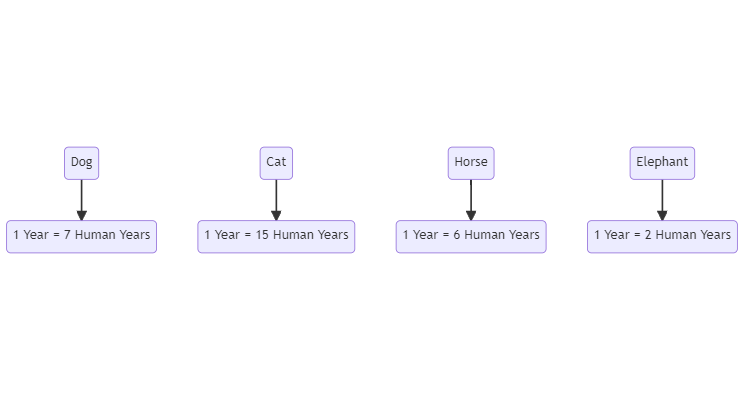
The concept of “dog years” is based on the idea that dogs age more quickly than humans do. This idea is not entirely accurate, as the rate at which a dog ages is not directly equivalent to a fixed number of human years. However, it is generally understood that the first year of a small dog’s life is roughly 15 years of a human’s life, the second year of a dog’s life is around 9 human years, and each year after that equates to 5 human years. This is a rough estimate, since the rate at which a dog ages can vary.
Table of Contents
Why do animals have different years than humans?
It’s a question that many people have wondered: why do animals have different “years” than humans? For example, a dog is considered to be one “year” old after just 365 days, while a human is not considered an adult until they reach 18 or 21 years old. So, why the discrepancy?
The answer lies in the differing life spans and aging patterns of different species. In general, animals that have shorter life spans age more quickly than animals with longer life spans. For example, a mouse will age much more quickly than an elephant. This is why a dog can be considered an “adult” after just one year, while a human is not considered an adult until they reach 18 or 21 years old.
It is also important to note that aging is not a linear process for all animals. For example, many species, like dogs, experience rapid growth and development in their first year of life, followed by a more gradual aging process. Humans, on the other hand, have a more gradual growth and development process that continues throughout our lives.
To better understand the concept of aging and different “years” for animals, let’s take a look at the aging process for a few different species:
Dogs
Dogs are considered to be fully grown by 1 year old. But this age varies depending on the breed. Large breeds take more time to mature and stop growing around 18 months old.
A dog’s age can be calculated by multiplying the number of human years the dog has been alive by 7. So, a 1-year-old dog is considered to be the equivalent of a 7-year-old human.
Cats
Cats, like dogs, are considered to be fully grown by 1 year old. But again this age varies depending on the breed of cat.
A cat’s age can be calculated by multiplying the number of human years the cat has been alive by 15. So, a 1-year-old cat is considered to be the equivalent of a 15-year-old human.
Horses
Horses, on the other hand, do not reach full maturity until they are between 4 and 5 years old.
A horse’s age can be calculated by multiplying the number of human years the horse has been alive by 6. So, a 1-year-old horse is considered to be the equivalent of a 6-year-old human.
Elephants
Elephants, which have a much longer life span than dogs, cats, or horses, do not reach full maturity until they are between 15 and 20 years old.
An elephant’s age can be calculated by multiplying the number of human years the elephant has been alive by 2. So, a 10-year-old elephant is considered to be the equivalent of a 20-year-old human.
As you can see, different animals have different “years” due to their unique aging patterns and life spans. Understanding these patterns can help us better understand and appreciate the natural world around us.

It’s important to keep in mind that these are just general guidelines, and that individual animals may age differently depending on their health and lifestyle. Additionally, different species may have different “milestones” that mark the transition from one stage of life to the next. For example, in humans, we might use milestones like learning to walk or reaching puberty to mark the transition from childhood to adolescence, while in dogs, it might be the loss of their puppy teeth or the onset of sexual maturity.
Here’s a table that compares the aging process of different animal species:
| Animal | Age in Human Years | 1 Year Equivalent |
|---|---|---|
| Dog | 1 year = 7 human years | 1 year = 1 year |
| Cat | 1 year = 15 human years | 1 year = 1 year |
| Horse | 1 year = 6 human years | 1 year = 1 year |
| Elephant | 1 year = 2 human years | 1 year = 10 year |
Conclusion
In conclusion, animals have different “years” than humans because their aging patterns and life spans are unique to their species. This is something that makes every animal unique and special in its own way. Understanding these differences can help us better understand and appreciate the natural world around us. However, it is important to note that aging is a complex process and these comparisons should not be taken as hard and fast rules, but rather as general guidelines.
Related article: Why Do Dogs Live So Short
